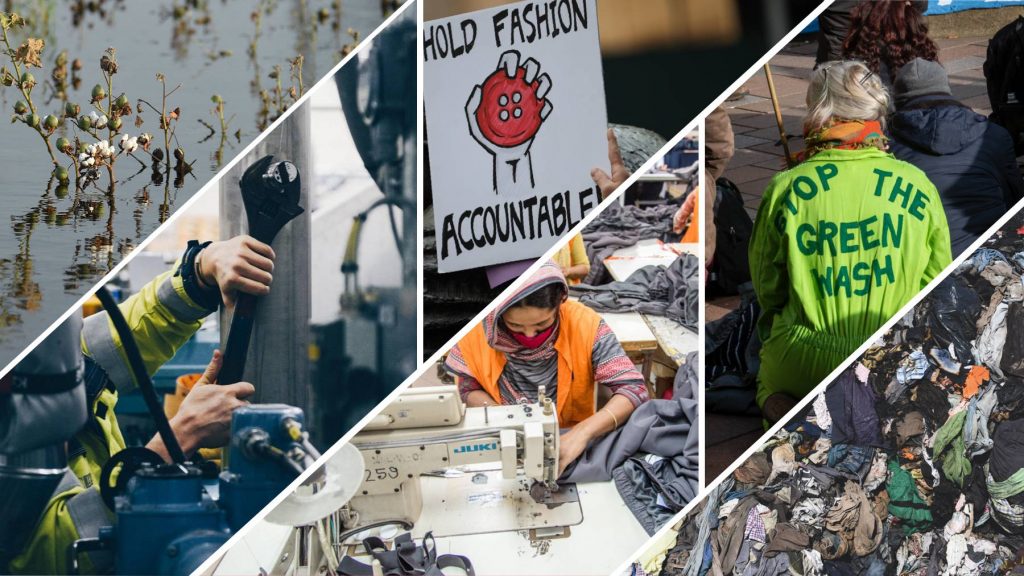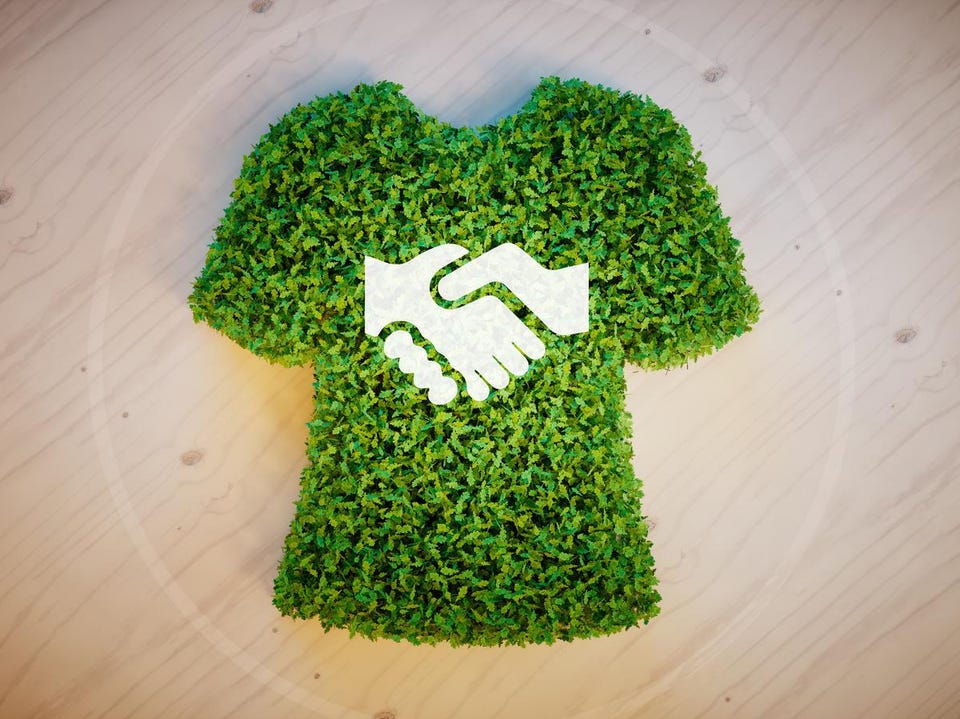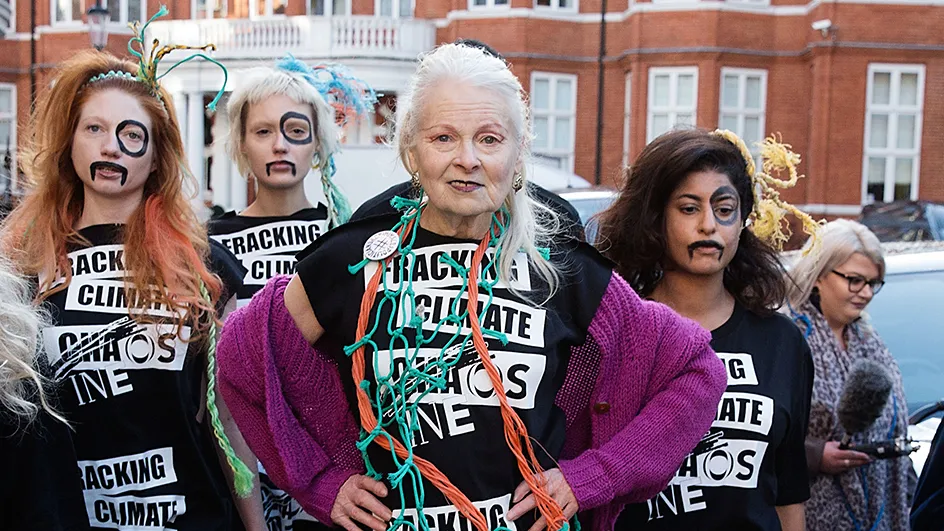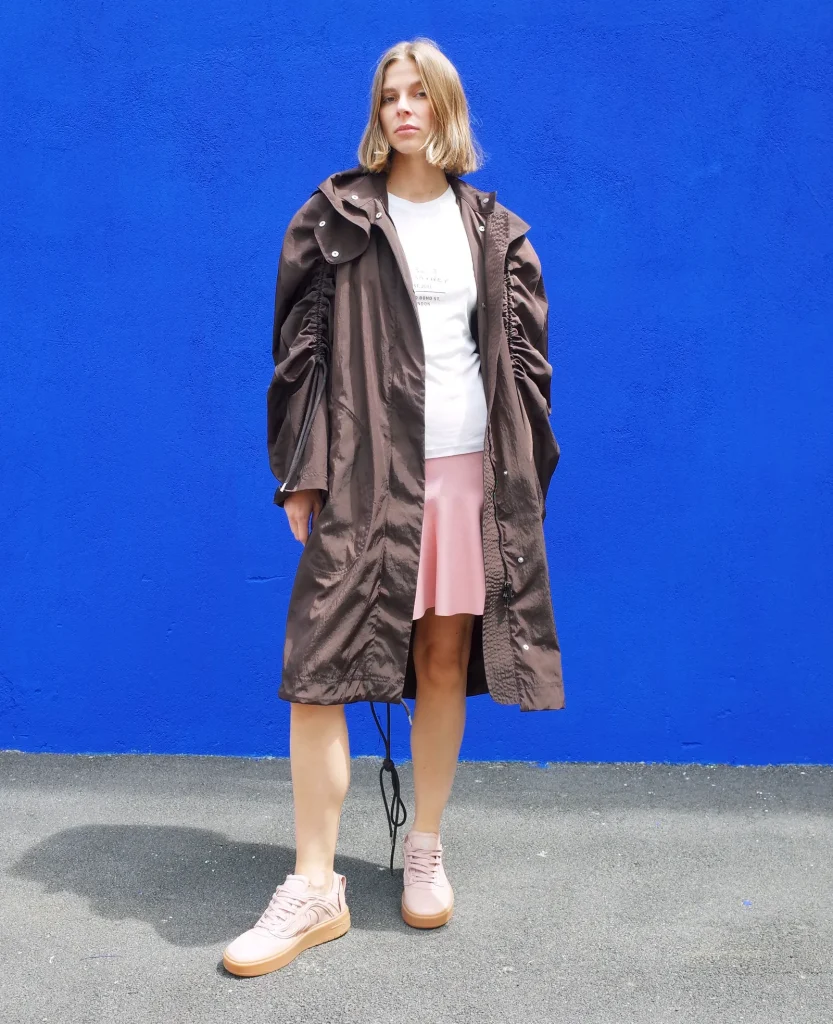Climate activists. (Photo Credit:Prakati India.in)
Happy New Year! As we kick off 2023 in style, let your New Year’s Resolution count. Why not look to become more sustainable this new year, both personally, as well as in your work as a fashion professional or as an aspiring one?
The start of a new year is often a time of reflection. A time to learn from past mistakes. Were you as eco-minded as you would have liked last year? Did you compost? Did you make fashion purchases with landfills in mind? Was sustainability top of mind when you chose fabrics for your designs? Well then, maybe it’s time you do.
Climate change has been one of the biggest topics of conversation this decade, with activists like Greta Thunberg emphasizing the damning scientific facts about the future of Mother Earth. It’s the voices of our younger generation that are crying for help, and they are within their rights. If we all don’t get onboard and make changes, they will inherit a very unlivable earth.
Unfortunately, the fashion industry is known as one of the biggest and most damaging pollutants to our planet and although some strides have been made over the years, we have a long way to go in becoming carbon-neutral. It’s almost ironic that the fashion industry, who is extremely vital in implementing trends and can influence the buying habits of a majority of consumers, is not doing more.

Regulation, circularity, greenwashing and climate resilience will be hot topics in the year ahead. (Photo Credit: Getty Images, Renewcell, and Shutterstock. Collage by BoF)
Consumers buy what they are offered. And if fashion brands don’t offer sustainable products, then consumers don’t get to buy them. Simple. In a survey conducted by McKinsey during the beginning of the Covid-19 pandemic, “67 percent [of respondents] consider the use of sustainable materials to be an important purchasing factor, and 63 percent consider a brand’s promotion of sustainability in the same way.”
Therefore, consumers could BE the solution if only they were being offered sustainably-made products. The pressure for sustainability high. Data provided by Launchmetrics’ proprietary algorithm that measures Media Impact Value (MIV is a monetary representation my company uses for brand performance), reveals that the MIV for sustainability grew by 54% during the first semester of 2022 compared to the first semester of 2021, accounting for $2 billion and $1.3 billion in value, respectively. The data revealed just how much discussion ‘sustainability’ generated in the media, as well as how many placements the word generated across sectors. When comparing the growing MIV to the placements that the industry generates, it is clear that consumers are beginning to make changes towards going green. This shift indicates that brands need to reevaluate their operations to project the right brand image. In order to achieve this, fashion companies need to take more concrete steps to incorporate sustainability, a process which goes further than just brand images and campaigns.
True sustainability should guarantee that the creation of each garment is environmentally and socially sound, from textiles to manufacturing all the way to fair pay and workers’ conditions. This is a massive change for an industry that has struggled with wasteful operations and negative environmental consequences for years. The fashion industry is responsible for the production of up to 10% of the global carbon dioxide output and accounts for one-fifth of the 300 million tons of plastic produced globally each year, according to the United Nations Environment Program (via Bloomberg). So obviously, incorporating sustainable practices is a challenge for the fashion industry. Nevertheless, many designers, brands, and manufacturers are open to embracing climate change.

The need for fashion to go green. (Photo Credit Getty Images)
There is some hope. In fact, fashion accounted for $618 million in MIV when it came to sustainability during the first semester of 2022, according to Launchmetrics’ sustainability report, “Making Sense of Sustainability,” which was produced in partnership with the Camera Nazionale della Moda Italiana. The report analyzed data from multiple platforms between January 2021 and October 2022. The fashion industry accounted for one-third of the overall sustainability conversations, indicating how open it is to committing to a greener future. Very encouraging.

Vivienne Westwood in February, 2018 in London. (Photo By Getty Images)
Dame Vivienne Westwood, known as the Queen of Punk was a true climate activist. Sadly, the groundbreaking designer passed away on December 29, 2022 at the age of 81. As one of the last independent brands in the UK, Westwood used her voice to educate the industry on climate change and sustainability. She was as notorious for her Kings Road Sex shop, as she was for her activism and ecological crusading. For the past 20 years Westwood supported hundreds of causes, NGOs, grass root charities and campaigns including Amnesty International, War Child and Liberty, as well as launching her own campaigning movement – Climate Revolution. She is was an ambassador for Greenpeace and in 2013 designed their official ‘Save the Arctic’ logo. In 2015, Westwood launched a global campaign to stop drilling and industrial fishing in the Arctic region.

Stella McCartney, pictured here with Vivienne Westwood in Paris in 2019, said: ‘fur is immoral, cruel and barbaric’. (Photo Credit: Getty Images_
Following in Westwood’s activism footsteps is Stella McCartney. She has been a true pioneer in the climate change movement for decades and always works with innovative sustainable textiles. The fashion industry grapples with the pressure of continuous growth, while still publicly pledging to slash greenhouse gas emissions. According to an interview with Vogue magazine, McCartney believes a balance can be struck between the two. “I do believe if we can continue to progress, and if we truly want it, then we can replace bad business with clean business,” she says.
This is just one of the reasons McCartney continues to team up with innovators that are developing more sustainable materials such as Econyl, a regenerated nylon created from discarded fishing nets and other plastic waste. In early 2023, the brand will launch its first commercially available, fully circular garment: a parka made from Econyl that is 100 percent recycled and recyclable. McCartney previously launched an Infinite Hoodie in collaboration with Adidas in 2019, made using NuCyl, a fiber designed to be broken down and reused into endless future garments. Only 50 were available at the time.

Stella McCartney is launching a new fully circular parka made from Econyl that is 100 percent recycled and recyclable. (Photo Credit: Stella McCartney)
“The parka fully closes the loop—it’s taking 100 percent waste and then [when you’re finished with it] you can either bring it back to a Stella McCartney store or you can use the QR code on there and post it, and we can then recycle it back into fiber and make it into another garment,” McCartney explains. “It’s really cool—for me it’s cooler than just going, ‘Oh, I really love neon green fuzzy boots this season.’ It’s the most fashionable thing you can do if you’re working in the world of fashion right now.”
Along with Econyl, McCartney has partnered with Bolt Threads on its Mylo “un-leather,” made from mushroom roots (the designer was part of an early “consortium” of brands backing the company) and a “wine leather” made by the Italian company Vegea made from grape waste. Meanwhile, McCartney has also helped set up a new $200 million fund called Collab SOS, which invests in companies including Bolt Threads. Other projects the fund has supported are: Natural Fiber Welding, which has created a plastic-free leather alternative called Mirum, and Protein Evolution, a start-up that has developed a process designed to allow plastic waste (including nylon and polyester) to be infinitely recycled.
“It’s important for me personally to put investment into those new start-ups and into the future of fashion because I’m in fashion,” McCartney says of her involvement in the fund in an interview with Vogue. “I’m working every day alongside so many incredible tech brands. We’re working on developing materials together and solutions, and then I’m bringing them into a business model. For me to use my partners [and] my contacts to upscale everything [via the fund]—then you can truly see a meaningful change.”
McCartney has been advocating for these textile changes within the designer community for several years now, however, she states that legislation is what is really needed for significant progress to be made. This is why she attended the G7 Summit in Cornwall in 2020 and is among a number of designers to have backed The Fashion Act in New York—a proposed bill that would require any fashion brand that does business in New York and has an annual global revenue of over $100 million to disclose their greenhouse gas emissions, as well as their energy, water, material and plastic usage, and chemical management.
McCartney makes it clear that government policies need to change around the issues of climate change. “I just thought I’d go to [Central] Saint Martins and be a fashion designer,” McCartney jokes in a Vogue interview. “But there’s a lot of work to be done. I have my political hat on or my fashion hat on; I’m a bit confused as to which one to wear half the time.”
Stella McCartney is not the only fashion designer to tirelessly work as a climate advocate. There are countless others ranging from young designers to more established brands such as, Gabriela Hearst, Mara Hoffman, Eileen Fisher, Katie Jones, Alejandra Alonso Rojas, Morgane Sézalory of Sézane, Alexandra Sipa, Emma Hill of Damson Madder, Teodora And Pavel Lozanov of Bogdar, Kevin Germanier of Germanier, Roopa Pemmaraju, Conner Ives, Misha Nonoo, Christy Dawn, Jonathan Cohen, Zero + Maria Cornejo, Katharine Hamnett, Christopher Raeburn, and Sandra Sandor to name a few.
MATERIAL EXCHANGE
If you are looking for ways to become more sustainable in your designs, you can join the Material Exchange organization. They are offering a workshop on Thursday, January 12th from 9 AM to 3 PM EST. It will be a remote impact-reduction workshop and will offer insights into sustainable sourcing solutions, as well as the know-how to adopt these solutions into your brand’s sourcing workflows. Topics covered will include: implementing sustainable design strategies; calculating transportation, material, and product impacts; assessing hotspots; shifting to responsible sourcing methods; adopting a circular business model; and creating engaging take-back plans. Participants will receive a Certificate of Completion at the end of the course!
Workshop details
What: Fashion Assessment and Impact-Reduction Workshop co-hosted by the USFIA and Material Exchange
Where: online
When: Thursday, January 12th from 9 AM to 3 PM EST
Who: any and all fashion professionals trying to reduce the environmental impacts of their products and work toward circularity at their companies
Fee: $165
Here is the link to register:
https://www.usfashionindustry.com/index.php?option=com_civicrm&task=civicrm/event/register&id=413&reset=1
UOF LESSONS ON SUSTAINABILITY
Be sure to catch UoF’s lessons on sustainable design and sourcing:
Introduction to Sustainable Fashion Design
Meet Sustainable Designer Parron Allen
Sustainable Materials For Fashion Design
Designing, Producing & Marketing a Sustainable Collection
So tell us, what will you do to create or purchase more sustainable fashion?
-------------------------------------
By: Antonia Sardone
Title: WHY NOT HAVE YOUR NEW YEAR’S RESOLUTION BE ABOUT SUSTAINABILITY
Sourced From: www.universityoffashion.com/blog/why-not-have-your-new-years-resolution-be-about-sustainability/
Published Date: Sun, 08 Jan 2023 23:55:44 +0000
Read More
Did you miss our previous article...
https://edmmusic.news/fashion-clothing/university-of-fashion-coming-attractions-2023
 FestivalsMusicNew ReleasesArtistsFashion & ClothingVideosPrivacy PolicyTerms And Conditions
FestivalsMusicNew ReleasesArtistsFashion & ClothingVideosPrivacy PolicyTerms And Conditions
